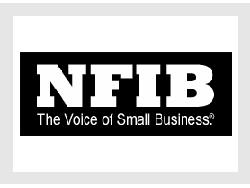Small Business Capital Expenditure Plans Highest Since '06, NFIB
Washington, DC, September 15, 2017-The percentage of small business owners planning to make capital expenditures in the next three to six months reached its highest level since 2006, according to the National Federation of Independent Business (NFIB) Index of Small Business Optimism.
“This is a sign of economic health that we’ve been expecting based on the soaring optimism that began last year,” said NFIB president and CEO Juanita Duggan. “Higher optimism resulted first in higher employment activity, and now we’re seeing more small business owners making capital investments.”
The NFIB Index rose 0.1 points to 105.3. Five of the components increased, while five declined. The lofty reading keeps intact a string of historically high performances extending back to last November.
“Consumer demand is very strong, and the regulatory relief has been dramatic,” said Duggan. “Small business owners still expect progress on tax reform and healthcare, and they will be watching closely.”
According to NFIB chief economist Bill Dunkelberg, the August figures for capital outlays are typical of a growing economy.
“Small firms are now making long-term investments in new machines, equipment, facilities, and technology,” he said. “That’s a real sign of strength, and it will be interesting to see if the August result becomes a trend.”
Plans to make capital outlays were most common among professional services firms (46%), followed by manufacturing (38%), wholesale trades (36%), agriculture (33%), and construction (33%).
A net 27% of small business owners expected better sales in August, a five-point gain over the previous month. That matches the number of owners who said it’s a good time to expand, a four-point jump from July.
Job creation plans dipped by one point but remain historically high. Job openings slid four points, a sign that more business owners are slowly filling positions in the midst of a serious shortage of skilled labor.
“Consumer demand is driving optimism, and optimism is driving business activity,” said Duggan. “Substantial regulatory relief is also a big factor because it creates a much more hospitable business climate.”
